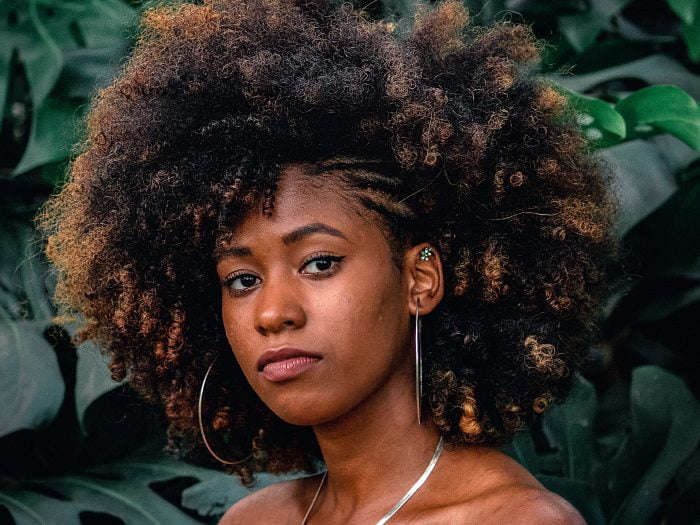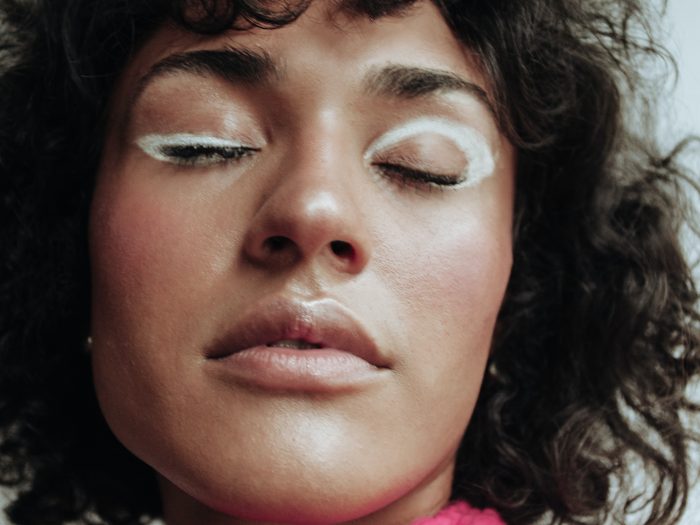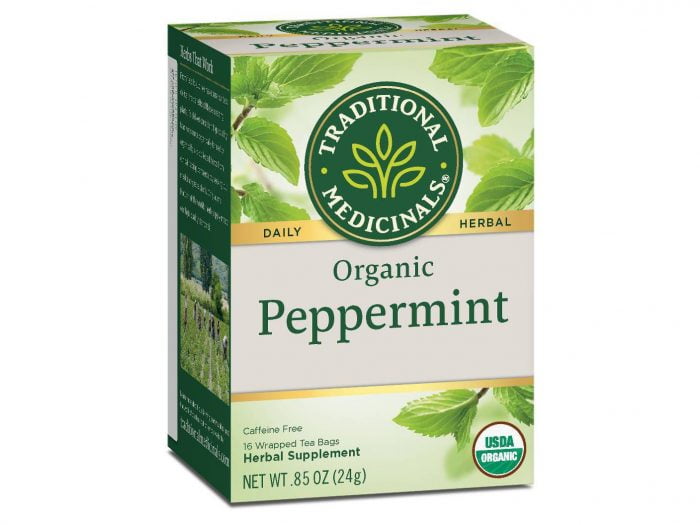How to heal hormonal acne holistically in 6 easy steps
What is clean beauty? And—for that matter—green beauty, eco-friendly beauty, and natural beauty? In Clean, Green, And In Between, beauty expert Jessica DeFino explores the ins and outs of these buzzy terms, reports on the products and ingredients to look out for, and answers all of your most pressing questions.
You know that quote, “A best friend is someone who tells you the truth, even when you don’t want to hear it?” That’s kind of how I feel about my hormonal acne. I might not love the cold, hard truth that my hormones are imbalanced, and I definitely don’t love how it’s delivered via a series of deep, cystic bumps along my chin, cheeks, and jawline. But, boy, do I love having a best friend that knows me well and gives it to me straight.
I didn’t always see my skin this way. For a long time, I metaphorically plugged my ears and did the whole “la, la, la, la, I can’t heeear you” thing whenever my monthly crop of PMS pimples popped up—which, non-metaphorically, meant lots of salicylic acid and benzoyl peroxide. Those were no match for my raging hormones, though, so I eventually brought in the big guns: birth control pills. That shut ‘em up, alright.
Except… my hormonal acne returned when, eight years later, I stopped taking the Pill. How rude!, I thought. Really, though, I was the rude one. Instead of listening to my hormones, I silenced them for almost a decade—then expected them to fix themselves. And unfortunately for all of us relying on birth control, prescription spironolactone, antibiotics, and Accutane to fix our zits, that’s not how hormonal acne works.
Hormonal acne is a communication from within the body; a sign of internal imbalance. It affects your skin, yes, but it’s not about your skin. To state the obvious, it’s about your hormones.

What is hormonal acne?
“Hormonal acne can be rooted in an issue of excess testosterone, estrogen, or environmental chemicals that mimic our hormones,” says Dr. Jolene Brighten, a Functional Medicine Naturopathic Physician and author of Beyond The Pill. “It can also be caused by poor gut health that leads to inefficient elimination of metabolic waste and hormones.”
“Some of the signs dermatologists look for in hormonal acne are acne that has a prevalence for the chin or jaw area and acne that worsens around menstrual cycles,” adds Sabrina Uddin, M.D., a board-certified dermatologist based in Chicago. For some, “PMS pimples” may only be present at certain points throughout the menstrual cycle, as progesterone and estrogen levels fluctuate; for others, hormonal acne is constant. In most instances, the symptoms can be traced back to increased testosterone or cortisol production—both trigger the skin’s sebaceous glands to churn out extra oil.
Why treat hormonal acne holistically?
While common “solutions” like topical products and prescriptions for birth control, spironolactone, and Accutane may mask the aesthetic symptoms of hormonal imbalance (i.e., acne), they don’t do anything to address the root cause of hormonal imbalance. Underneath it all, your hormones are still wreaking havoc—and by suppressing their cries for help, you could be missing important cues about your health. (Hormones basically control everything in the body, so those pesky pimples could be signaling any number of serious issues, from period problems to fertility to chronic fatigue.)
That’s probably why the above solutions don’t work. At least, not long-term. One study of Accutane notes that “complete remission could not be obtained” in patients whose acne was determined to be hormonal. Those who opt for birth control or spironolactone (an old-school blood pressure medication that has the serendipitous side effect of blocking oil-stimulating hormones) typically see a resurgence of skin issues the second they stop poppin’ the pills.
“The Pill is not supporting your hormones, the Pill is shutting them off,” explains Alisa Vitti, a functional nutritionist, hormone expert, and author of WomanCode. “It’s not making them better, it’s shutting off the brain-ovary conversation.”
As soon that concept clicked for me—that my hormonal acne was part of a larger conversation my brain was having with my body, a symptom of something deeper than skin-deep—I knew I needed to stop silencing my hormones and start listening to them.
“When we consider acne is a symptom of an underlying imbalance like poor detoxification, dietary and lifestyle habits, and hormone imbalance, then we need to examine our environment in answering the question of why acne seems more prevalent,” Dr. Brighten agrees.

The best holistic treatment options
To be clear, if you’re experiencing significant hormonal issues, you should seek advice from a medical professional—an endocrinologist, a functional medicine doctor, a naturopath. But if your main concern is a clear complexion, there’s a surprising amount you can do on your own with foods and supplements. “When you are supporting your hormones with food, you are ‘bio-hacking,’” Vitti says. “You’re using micro- and macro-nutrient therapy to enhance the performance of your endocrine system.”
Ahead, six simple steps you can take right now to help your BFF—you know, the hormonal acne that’s not afraid to hit you with the truth—feel better.
1. Avoid dairy
By now, you’re probably aware that dairy triggers acne. But do you know why it triggers acne? That’s right: hormones. Milk contains natural growth hormones. These are meant to nourish young calves (ah, the beauty of nature) and don’t necessarily belong in the human body. Many dairy cows are also treated with artificial hormones to help them pump out more milk, and research shows that these hormones interfere with human hormones, possibly leading to pimples. Cut out all dairy for six weeks, Dr. Brighten says, and you may notice happier skin.
2. Get enough vitamin D
Did you know that vitamin D isn’t really a vitamin? It’s a prohormone—AKA, a substance the body converts into a hormone. Studies show that it helps regulate sebum production, keeping pores from getting clogged, and even inhibits acne-causing bacteria. The World Health Organization recommends getting five to 15 minutes of sunlight every morning to ensure sufficient vitamin D synthesis, but supplements are an option, too.
3. Get enough vitamin B5
Vitamin B5 isn’t exactly a hormone, but it is involved in the development of stress-related hormones. The other role it plays in the body? Breaking down fats and carbohydrates—both of which are components of sebum—by increasing levels of Coenzyme A. Without sufficient B5, sebum becomes thick, sticky, and more likely to trigger breakouts. Again, supplements are an option, but it’s always best to get your vitamins from whole foods. Chicken, beef, eggs, broccoli, and mushrooms are great sources.
4. Supplement with DIM
Diinodolymlethane—DIM for short—is a compound found cruciferous veggies (think broccoli and cauliflower) that supports hormone health in two ways. First, it blocks excess androgens (“male” hormones like testosterone) from reaching receptors (where they stimulate excess sebum production). Second, it “improves the process of estrogen breakdown by the liver,” Nicole Jardim, a nutritional coach, told InStyle. To get enough DIM to make a difference, experts recommend taking a DIM supplement daily (after checking with your doctor, of course).
5. Sip spearmint tea
Like DIM, spearmint tea has anti-androgen properties to help mitigate the excess sebum production that often leads to hormonal acne. And the American Academy of Dermatology approves! A study it conducted in 2015 showed that after one month of drinking two cups of spearmint tea per day, patients saw a 25% reduction in acne. After three months, that percentage shot up to 51%.

6. Try seed cycling
Seed cycling sounds a little strange, but I swear by it. The process involves eating raw seeds every day, in accordance with the phases of one’s menstrual cycle: Take a tablespoon of flax seeds and pumpkin seeds from Day 1 (the first day of your period) to Day 14, and a tablespoon of sesame seeds and sunflower seeds from Day 15 to Day 28. Seriously.
“Essentially, the whole purpose of it is to try to use food as a delivery system to boost key micronutrients that help balance out estrogen and progesterone,” Vitti says. “For example, flax binds to estrogen receptor sites and modulates the action of estrogen in the body. In the second half, we’re really talking about the seeds that help the body support the liver’s job in flushing estrogen out of the body, like sesame and sunflowers seeds.” (You can read more about the how-to here). Vitti is quick to note that seed cycling is not “a cure” for hormonal imbalance, but it may help soothe hormonal acne in two to three cycles.
Supporting your hormone health is a lifestyle.
“Your diet is a holistic experience—you have to take the rest of it into consideration,” Vitti says. Are any of the above a surefire fix for hormonal acne? “No,” she states. “ But can they start to give you a sense that if you change more of your diet, you can get more results? Yes.”
The hormone expert recommends tracking your symptoms and successes in a period-tracking app like MyFLO and using her books WomanCode and In The Flo to create a hormone-healthy diet that works for you and your lifestyle. You may also want to visit a professional to have your levels checked, work on lowering your stress levels, and avoid using cosmetics and cleaning products that contain endocrine-disrupting chemicals.
Yes, it’s a lot—but to see meaningful change, you need to “get committed to helping your hormones,” Vitti says. It’s only fair. After all, as your hormonal acne proves, they’re committed to helping you.
The post How to heal hormonal acne holistically in 6 easy steps appeared first on HelloGiggles.
